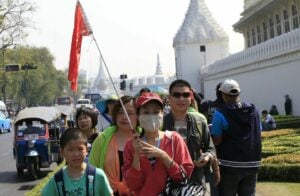China’s population plummet, two million decline in a year

China witnessed a massive decline in population last year with a decrease of two million, marking the nation’s second consecutive annual dip, according to government reports.
The aftermath of Covid-19 restrictions lifting unleashed a demographic whirlwind, unveiling unforeseen challenges for the once-populous Asian giant.
The statistics bureau disclosed that deaths surged by a staggering 690,000, reaching 11.1 million – more than double the increase seen in the previous year. The nation’s total population now hovers at 1.4 billion, but China has relinquished its long-standing title as the most populated country to India, as estimated by the United Nations last year.
The birth rate, continuing its seven-year decline, is posing a persistent economic and societal challenge for China. With 540,000 fewer births, the stark reality emerges that only 9 million babies were born in 2023 – half the number recorded in 2016. The ageing population threatens both economic growth and the ability to support an expanding elderly population with a dwindling workforce.
Once hailed for its one-child policy, China now grapples with a reverse conundrum. Despite relaxed policies allowing a second and even a third child since 2014, there has been minimal success in reversing the demographic slide. Factors such as delayed marriages, the choice to remain childless, and financial burdens associated with raising children in competitive urban environments contribute to this trend.
President Xi Jinping called for a renewed focus on guiding the youth’s perspectives on marriage and parenthood. He emphasised the importance of promoting policies that support parenthood and address the challenges associated with an ageing population, urging the reinforcement of traditional family values.
Population imbalance
The working-age population, aged 16 to 59, has dwindled to 61% of the total population, while the elderly, aged 60 and above, have risen to 21%. This shift raises concerns about the sustainability of the workforce, especially with the official retirement age in China standing at 60 for men and 50 or 55 for women, reported The Nation.
Amid the uncertainty surrounding Covid-related deaths, the sudden end to China’s zero-Covid restrictions in December 2022 left lingering questions. Though the government reported approximately 80,000 Covid-related deaths from December to February, experts estimate a much higher toll, reaching up to 1.9 million deaths.
While hopes are pinned on the waning effects of the pandemic and the auspicious Year of the Dragon to boost birth rates this year, experts caution that the downward trend in China’s total population appears to be an enduring and intrinsic characteristic, preparing for a demographic challenge of unprecedented proportions.
































